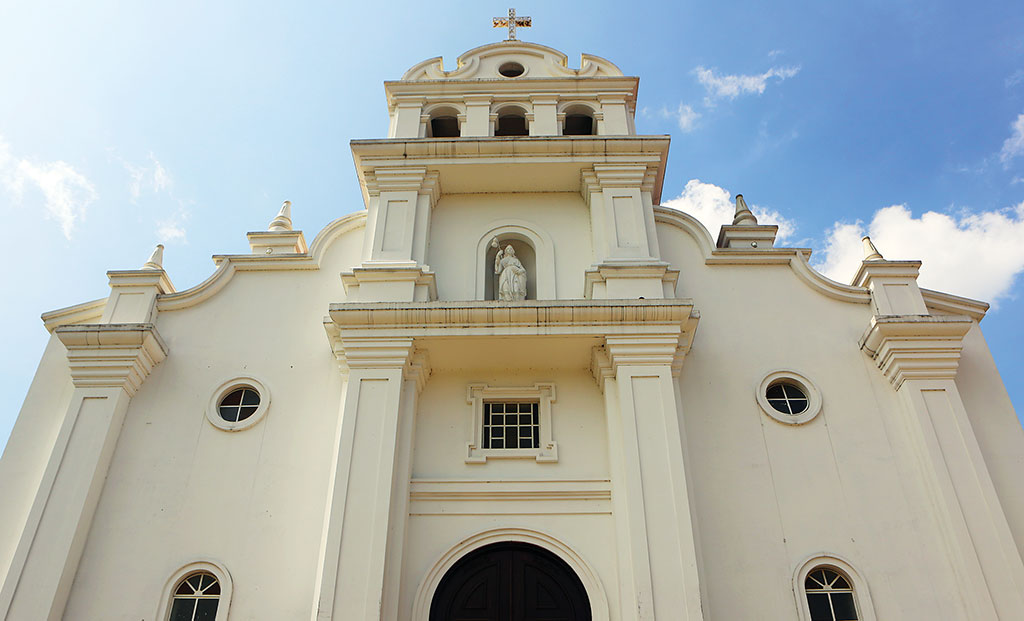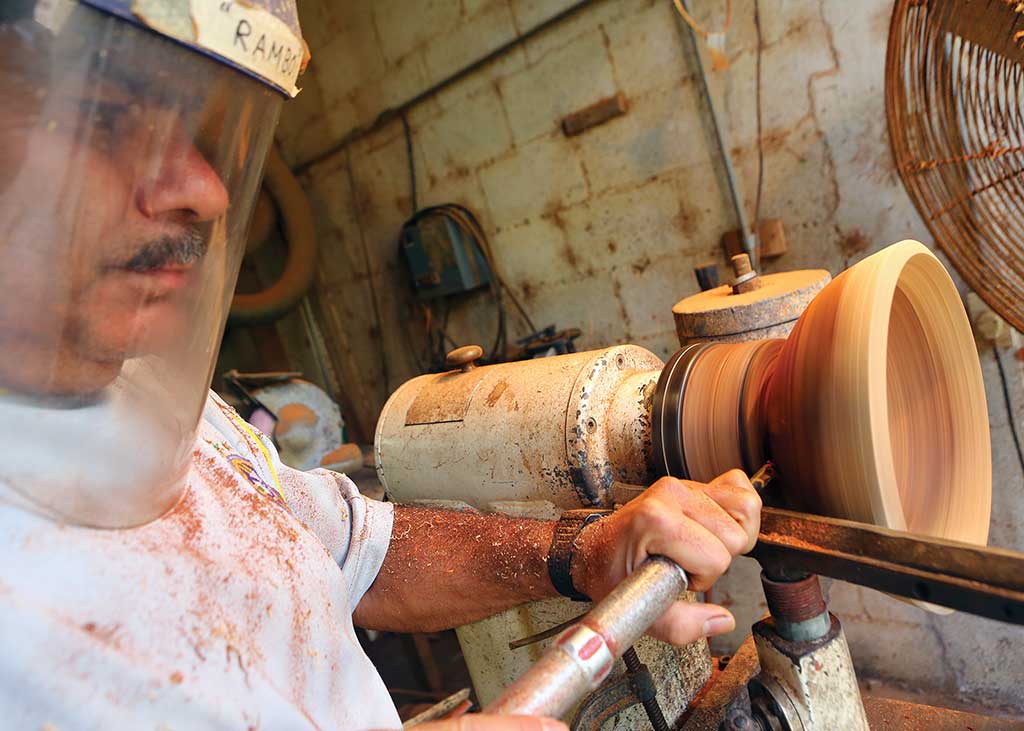Beginning only four kilometers (2.5 miles) west of San José’s Parque Sabana, Escazú is officially part of metropolitan San José. However, it is divided from the capital by a hill range and river canyon and is so individualistic that it functions virtually as a sister city. The town is accessed by the Carretera Próspero Fernández (Hwy. 27), an expressway that passes north of Escazú and continues via Ciudad Colón to the Pacific lowlands.
There are still a few cobblestone streets with houses of adobe, including those around the village plaza with its red-domed church, built in 1799 and painted with a traditional strip of blue color at the bottom to ward off witches.There are actually three Escazús, each with its own church, patron saint, and character. San Rafael de Escazú is the ultramodern, congested lower town, nearest the expressway. A beautiful old church—Iglesia Jiménez y Tandi—stands surrounded by chic restaurants, shopping plazas, and condominium towers that have drawn scores of English-speaking expatriates. This is the classiest address in the entire country, as the many million-dollar homes and upscale condos attest.
Colonial-era church in San Rafael de Escazú. Photo © Christopher P. Baker.
San Rafael merges uphill and south to San Miguel de Escazú, the heart of old Escazú. San Miguel was originally a crossroads on trails between indigenous villages. The indigenous people gave it its name, Itzkatzu (Resting Place). A small chapel constructed in 1711 became the first public building. Here, time seems to have stood still for a century. The occasional rickety wooden oxcart weighed down with coffee beans comes to town, pulled by stately oxen. Cows wander along the road. There are still a few cobblestone streets with houses of adobe, including those around the village plaza with its red-domed church, built in 1799 and painted with a traditional strip of blue color at the bottom to ward off witches. The church has a new frontage in a modern style with twin towers and overlooks the Parque República de Colombia.
Above San Miguel, the road climbs steadily to San Antonio de Escazú, a dairy and agricultural center beyond which the steep slopes are clad in coffee bushes and cloud forest. Farther uphill rises Monte La Cruz (topped by an imposing 15-meter-tall/50-foot-tall iron cross), Piedra Blanca, Cerro Rabo de Mico (the tallest, at 2,455 meters/8,054 feet), and Cerro de Escazú, fluted with waterfalls.
The real estate boom here has been ferocious, typified by the 2010 opening of Avenida Escazú (tel. 506/2288-0101), an upscale multifunction development of 12 high-rise buildings housing boutiques, hotels, offices, medical facilities, and even an IMAX theater.
In the hills of Bello Horizonte, Barry Biesanz Woodworks (tel. 506/2289-4337, 8am-5pm Mon.-Fri., 9am-3pm Sat.) is the workshop of one of Costa Rica’s leading wood designers and craftspeople. Barry Biesanz and his workers turn native hardwoods into beautiful bowls, boxes, and furniture. His boxes and bowls grace the collections of three U.S. presidents, Pope John Paul II, and assorted European royalty.

Shaping a bowl on a lathe at Barry Biesanz Woodworks. Photo © Christopher P. Baker.
On the old road to Santa Ana, about four kilometers (2.5 miles) west of San Rafael de Escazú, wildlife rescue center Refugio Herpetológico de Costa Rica (tel. 506/2282-4614, 9am-4pm Tues.-Sun., adults $14, students $11, children $7) cares for animals and birds seized by the Ministry of the Environment from poachers and illegal captivity. Although it mostly exhibits snakes, it also has crocodiles, turtles, monkeys, and toucans. Guided tours are offered.
Escazú is famous as the bruja (witch) capital of the country. The Río Tiribi, which flows east of Escazú, is said to be haunted, and old men still refuse to cross the Los Anonos Bridge at night for fear of La Zegua, an incredibly beautiful enchantress, and Mico Malo, the magic monkey. Some 60 or so witches are said to still live in Escazú, including Doña Estrella, who says, “Any woman who lives in Escazú long enough eventually becomes a bruja.” Amorous travelers should beware La Zegua: When the unlucky suitor gets her to bed, she turns into a horse.
Excerpted from the Tenth Edition of Moon Costa Rica.